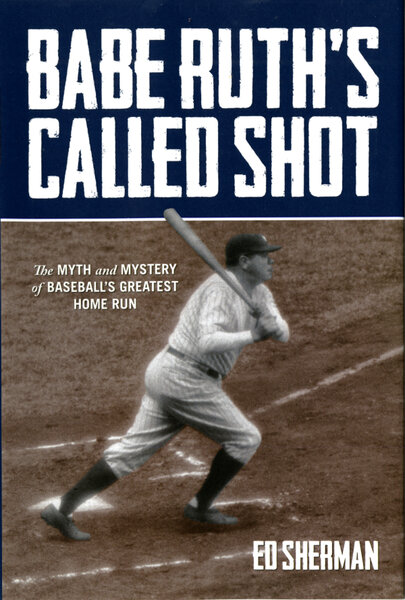By Ed Sherman
Lyons Press
272 pages
(During a 1932 World Series game against the Cubs at Wrigley Field, Babe Ruth appeared to point his bat to the spot in the outfield where he proceeded to hit his second home run of the game, setting off a long-running debate about the connection between the gesture and the clout.)
"Did Ruth really call his shot?
"Suddenly all the people in the stands weren't just fans; they were witnesses. What they saw and how they interpreted it served as vital testimony in an age before ubiquitous TV cameras covered every possible angle in a World Series game. But as with so many controversial moments, what they had to say only muddled the picture and added further intrigue to the Called Shot.
"The witnesses were split. The divide resembles a modern political map of Democrats and Republicans. Some maintain that Ruth did indeed point to center or right field on that fateful day. Others say not a chance.
"Why the split? Perhaps those who affirmed the Called Shot fell victim to the mythology attached to the feat. They wanted to believe what they wanted to believe: Of course it happened. I was there, so I saw it with my own eyes. And what of the naysayers? Maybe they simply missed Ruth making his grand gesture. Maybe they lacked the imagination to believe that a player could pull off such a stunt – even the greatest player of all time. Perhaps pedestrian logic prevented them from acknowledging the extraordinary."







